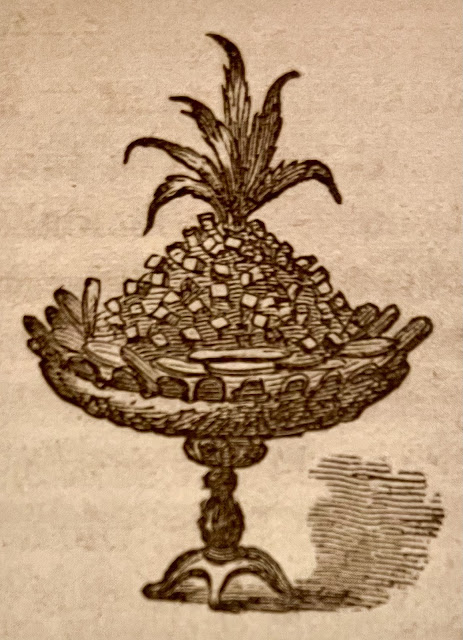Growing material prosperity meant that some people had the luxury to think more about food's visual aesthetics than ever before. For instance, Mrs. Peter White advised soaking pickles with grape leaves to turn them green, or adding a whopping half pound of turmeric to turn them yellow. Mary Henderson commented that raw oysters served in a block of ice created “a pretty effect in the gas-light.” Food and entertaining writers also obsessed over the importance of a clean, appealing table. “Too much can not be said as to the pleasant effect of a dinner,” Henderson wrote, “when the table-linen is of spotless purity, and the dishes and silver are perfectly bright.” Dietary reformers studying poor American eating eagerly praised one family that, under their influence, began setting their table with a white tablecloth, in contrast to other “slovenly and shiftless” families whose lack of civilization, as reformers saw it, was reflected in their lack of interest “in the appearance of their homes and tables.”
Another aesthetic consideration was noise, and middle-class writers believed the less of it the better. Etiquette writers condemned loud breathing, noisy chewing, and slurping of any kind, and they reminded diners not to clatter their silverware or scrape their chairs. Herrick praised a restaurant for its “noiseless serving,” while Henderson suggested that a thick mat should be placed under the tablecloth to muffle the sound of moving dishes and that servants should wear slippers to minimize the sound of their footfalls. Commentators prized quiet at the table because it indicated that eaters were self-controlled and servants were well trained. — From “Food in the American Gilded Age,” Edited by Helen Zoe Veit
Etiquette Enthusiast, Maura J. Graber, is the Site Editor for the Etiquipedia© Etiquette Encyclopedia

No comments:
Post a Comment
Note: Only a member of this blog may post a comment.